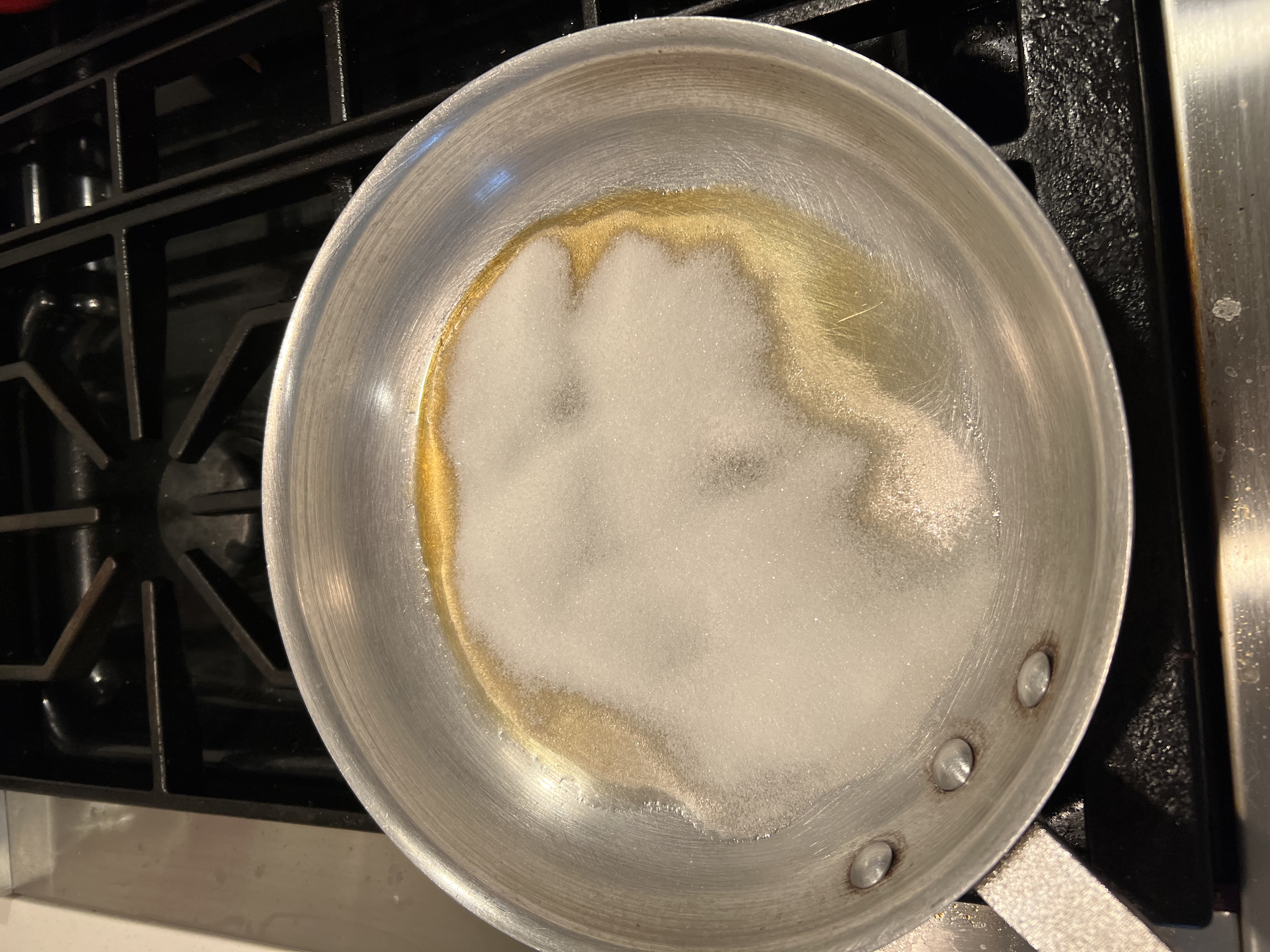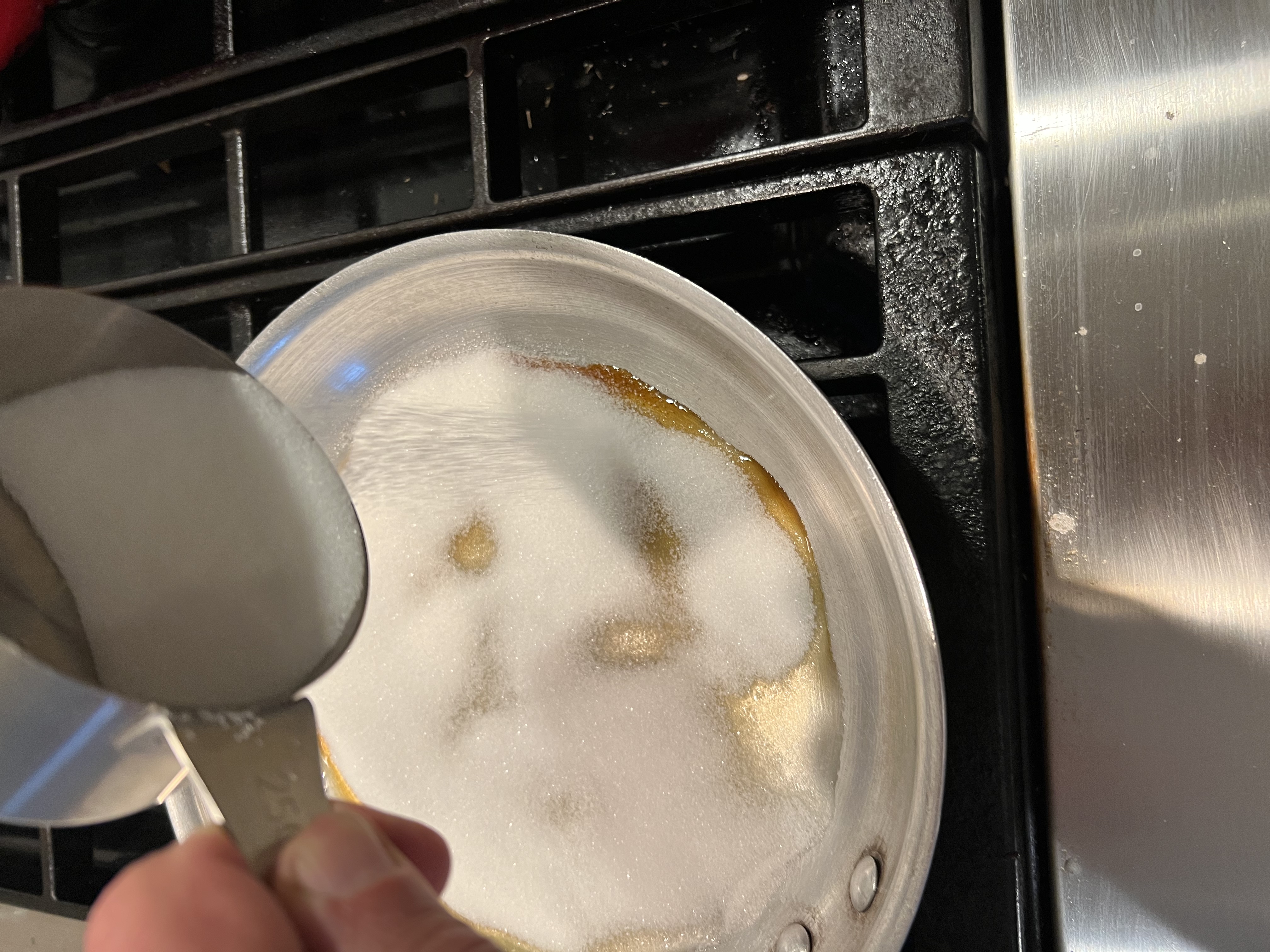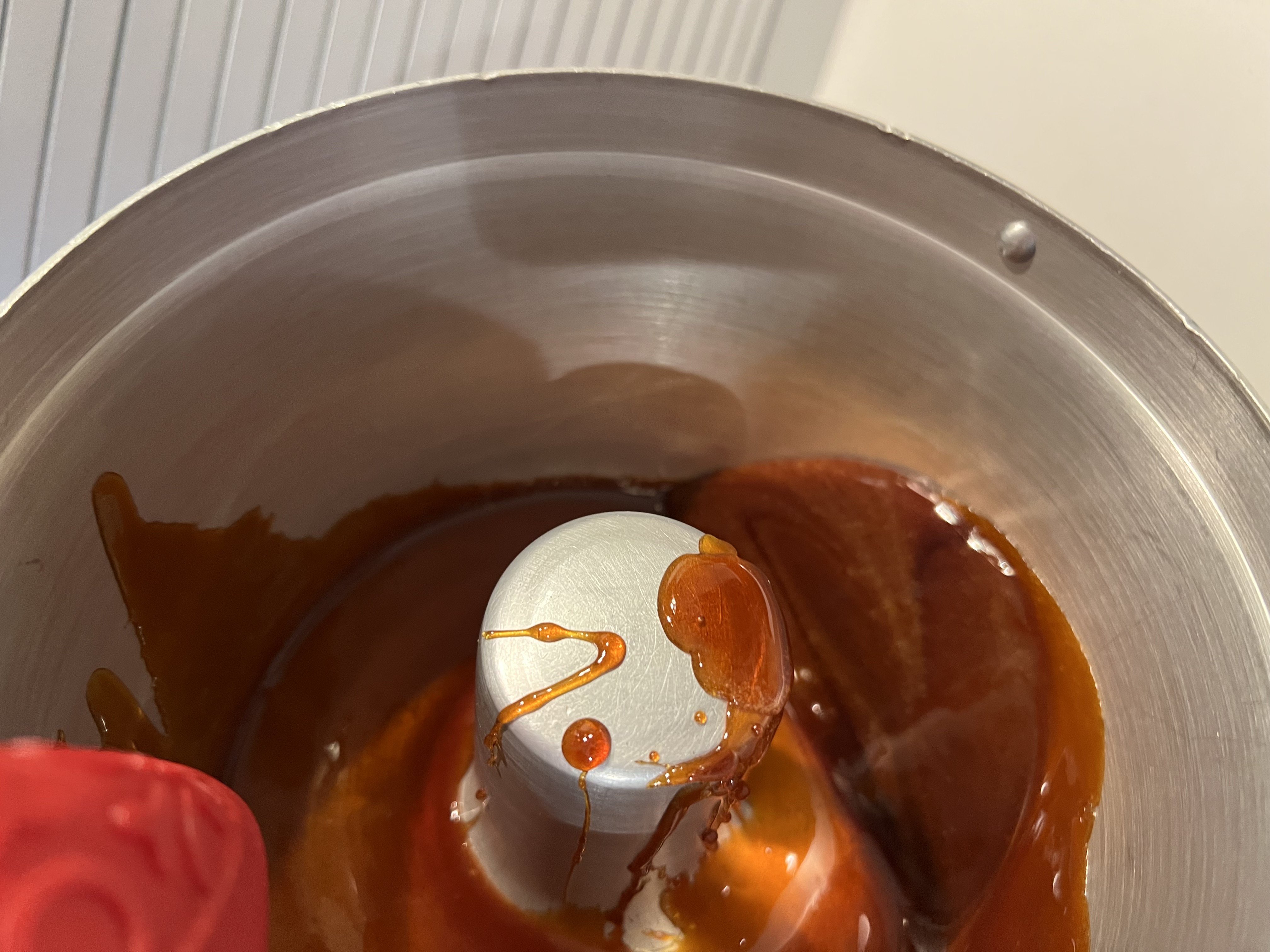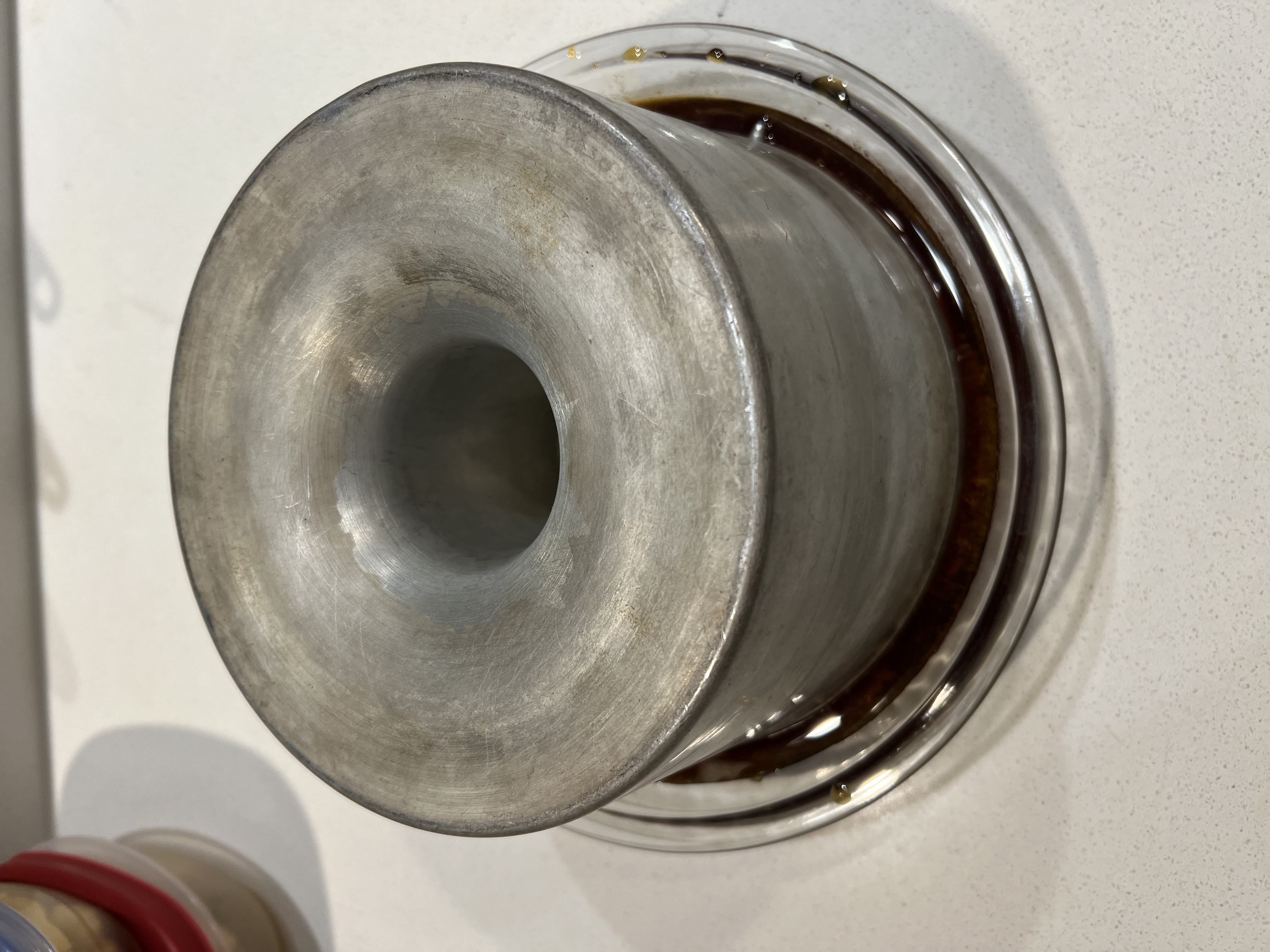Brazilian Creme Caramel
This version of creme caramel most likely came to Brazil from Portugal. It is rich in eggs as most
Portuguese desserts. In its traditional form, it is baked in a narrow ring form, but you can adapt it and
bake in regular square or round baking dishes or in small custard ramekins. One of the secrets here is to
have fresh omega-3 rich eggs with a very dark yellow yolk.
Another secret is to age the cream caramel first in the mold, and then after is is unmolded. This
will provide a rich colour and flavour to the pudim, and it will also result in a better, denser,
texture.
-
Ingredientes:
-
- 6 eggs plus 4 yolks
- 2 cups of sugar
- 3 cups of milk
- 1 tablespoon of vanilla extract
- 1/4 teaspoon of salt
-
Procedure:
-
- Pre-heat the oven to 325 F
- Heat about 1 1/2 inch of water in a large pan
- Prepare the Caramel
- Select the container in which you will bake the pudim and place next to the stove.
- Measure one cup of sugar.
- Place a saute pan on the fire and while it is still cold, sprinkle enough sugar to
completely cover the bottom of the pan, reserving some of the sugar.
- Stand watching. As the sugar starts to melt in spots, sprinkle additional cold sugar
on those spots. Keep adding sugar until all the sugar is gone.
- At this point there will be a layer of melted sugar in the bottom of the pan.
- Holding the handle with a pot holder, stir the sugar with a wooden spoon to ensure
that it cooks uniformly.
- Once the sugar melts, reduce the fire to moderate and keep stirring until you obtain
a nice brown color. It is important to obtain an intense color, but if you cook for too
long the caramel will be bitter.
- As soon as you reach the colour that you want, dump the entire mixture in the
baking container in which you will bake the pudim. In Brazil we use a special pudim
mold.
- Holding the mold with pot holders, swirl it around to coat the bottom completely
and for the caramel to come up the sides.
- Prepare the pudim base
- Measure 3 cups of milk in a glass container and heat up in the microwave.
- Break the eggs into a mixing bowl,.
- Add the yolks and 1 cup of sugar.
- Add the salt.
- Beat the eggs and sugar with a whisk until well mixed.
- Drizzle the hot milk in the egg mixture mixing constantly to temper the eggs.
- After the egg and sugar mixture gets more fluid, add the remaining of the milk, mix
well.
- Add the vanilla extract.
- Bake the pudim
- Strain the pudim base through a strainer into the caramelized mold.
- Set the form into the hot water bath.
- Bake for 1 to 1 1/2 hour, until a sharp knife inserted in the center comes clean.
- Remove from the water bath and let it cool for a while.
- Cover and put in the refrigerator.
- The pudim is at its best if served 4 or 5 days after it is prepared.
- Age the pudim
- Let it cool completely in the mold uncovered until it reaches room temperature.
- Place in the fridge, uncovered, for at least a couple of hours until it is cold.
- Cover the mold and leave it in the fridge for five to seven days.
- Run a pointed knife around the mold to loosen the pudim. It should release easily
because there will be caramelized liquid between the mold and the pudim.
- Put a glass pie plate on top of the mold and invert it. Let the mold stand on top of
the pudim for several minutes for the liquid to fall over the pudim.
- There should be a layer of caramel on the bottom of the mold.
- Add a small amount of water and place the mold over moderate heat on the stove.
- When it starts boiling, use a wooden spoon to release the caramel from the bottom
and stir until you have a caramel sirup — you will need potholders to hold to the
side of the mold while stirring as it will bet hot.
- Pour the sirup over the pudim.
- Put it back into the refrigerator, uncovered, and leave it there for a day.
- With a spoon drop some of the sirup that is surrounding the pudim on top of the
pudim before serving for a nice glossy look.































